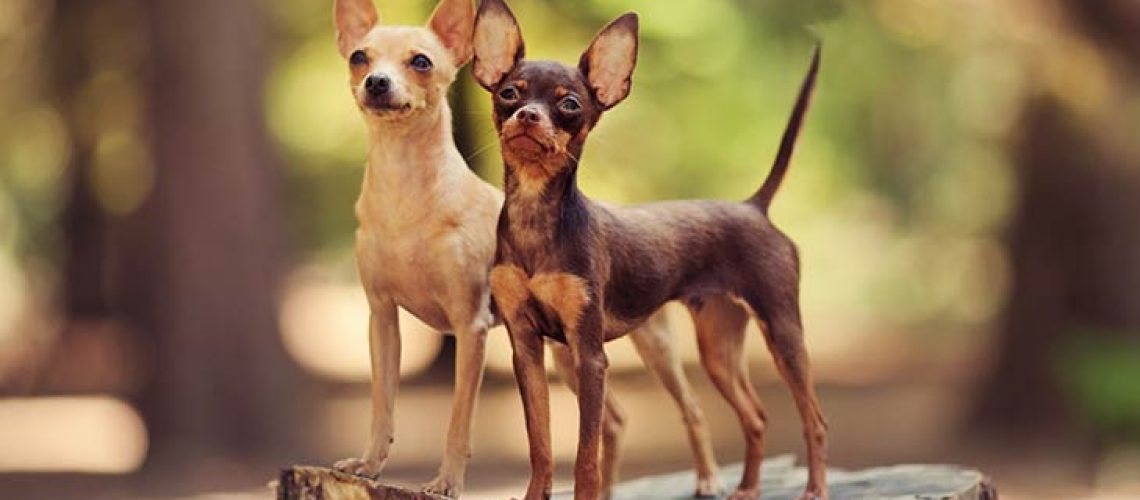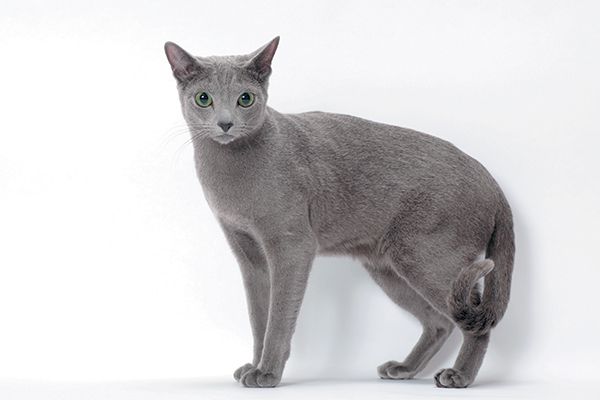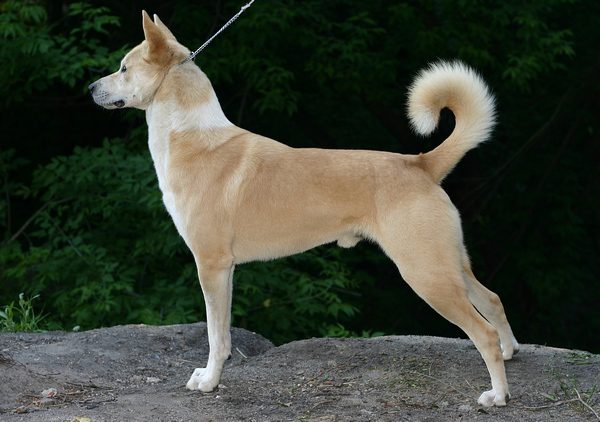Key Takeaways:
- The Russian Toy is a small breed known for its lively and affectionate nature.
- They require regular exercise and mental stimulation to prevent boredom and destructive behavior.
- Due to their delicate structure, they should be handled with care and protected from rough play or falls.
- Grooming needs are minimal, but regular dental care is important to maintain their oral health.
- Early socialization and training are crucial for this breed to ensure they grow into well-behaved dogs.
Are you curious about a small, adorable dog breed that has captured the hearts of many? Look no further! In this article, we will explore the fascinating world of the Russian Toy dog breed. Whether you're considering getting one as a pet or simply want to expand your knowledge, delving into this subject will bring you numerous benefits. Understanding the characteristics and care required for this breed is essential for providing them with a happy and healthy life. So, let's dive in and uncover all there is to know about the Russian Toy: Dog Breed Characteristics & Care. Get ready to be captivated by these pint-sized pups!
1. The Russian Toy dog breed: What makes them special?
Origin and History
The Russian Toy is a small breed of dog that originated in Russia. They have been bred for centuries and were initially used as companion dogs for the Russian aristocracy. Their small size and charming personality made them popular lapdogs, especially among the upper class.
In the early 20th century, the breed almost went extinct due to the Russian Revolution and World War II. However, dedicated breeders worked hard to revive the breed, and today, they are cherished pets around the world.
Charming Personality
Russian Toy dogs are known for their affectionate nature and loyalty towards their owners. They form strong bonds with their human family members and are always eager to please. Despite their small size, they have a big personality and are often described as lively, intelligent, and alert.
These dogs thrive on human companionship and love being part of a family. They enjoy cuddling on laps but also have a playful side that comes out during interactive games or short walks.
Unique Physical Features
The Russian Toy comes in two coat varieties: smooth-haired and long-haired. The smooth-haired variety has a short, sleek coat that requires minimal grooming, while the long-haired variety has a flowing coat that needs regular brushing to prevent matting.
This breed is tiny in size, with an average height of 8-10 inches (20-25 cm) at the shoulder and weighing between 4-6 pounds (1.8-2.7 kg). Their delicate appearance is accentuated by their large expressive eyes, erect ears, and graceful movement.
Key Points:
- The Russian Toy dog breed originated in Russia and almost went extinct in the early 20th century.
- They are known for their affectionate nature, loyalty, and intelligence.
- Russian Toys come in two coat varieties: smooth-haired and long-haired.
- They have a small size, with an average height of 8-10 inches (20-25 cm) and weighing between 4-6 pounds (1.8-2.7 kg).
2. Appearance of a Russian Toy dog: How do they look?
Body Structure
The Russian Toy is a small dog with a well-proportioned body. They have a slightly elongated neck that blends smoothly into their shoulders, giving them an elegant appearance. Their chest is moderately deep, providing ample room for their heart and lungs.
Their back is straight and strong, leading to a well-set tail that curls over the back when they are alert or excited. The tail should not touch the body or curl tightly against it.
Distinctive Facial Features
Russian Toy dogs have a refined head with a well-developed skull and muzzle. Their eyes are large, expressive, and set wide apart. They can be dark or bright depending on the coat color but always reflect intelligence and curiosity.
The ears are erect and set high on the head, contributing to their alert appearance. When the Russian Toy is attentive or interested in something, its ears stand up straight as if listening intently.
Key Points:
- The Russian Toy has a well-proportioned body with an elongated neck and moderately deep chest.
- Their back is straight, leading to a well-set tail that curls over the back when alert or excited.
- Their head is refined, with a well-developed skull and muzzle.
- Russian Toys have large, expressive eyes and erect ears that contribute to their alert appearance.
3. Russian Toy dogs: Are they good with kids and other pets?
Interaction with Kids
Russian Toy dogs are known for their friendly and affectionate nature, making them great companions for children. These small-sized dogs are generally gentle and patient, making them suitable for families with kids. However, it is important to supervise interactions between young children and Russian Toy dogs to ensure the safety of both parties. Teaching children how to properly handle and interact with a dog can help foster a positive relationship.
Compatibility with Other Pets
Russian Toy dogs can also get along well with other pets in the household, including cats and other dogs. Early socialization plays a crucial role in ensuring harmonious relationships between different animals. Introducing the Russian Toy dog to other pets gradually and under controlled circumstances can help them become familiar and comfortable with each other. Supervision during initial interactions is necessary to prevent any aggressive behavior or territorial disputes.
4. Exercise needs of a Russian Toy dog: How much is enough?
Daily Exercise Requirements
Despite their small size, Russian Toy dogs have moderate exercise needs that should not be overlooked. These energetic little companions require daily physical activity to keep them mentally stimulated and physically fit. A minimum of 30 minutes to an hour of exercise per day is recommended for this breed.
Suitable Activities
Engaging in various activities can fulfill the exercise requirements of a Russian Toy dog. Taking them on brisk walks, playing fetch, or allowing them to run freely in a securely fenced area are all excellent options. Interactive toys that challenge their minds can also provide mental stimulation while keeping them entertained.
5. Common health issues in Russian Toy dogs: What to watch out for?
Dental Problems
One common health issue in Russian Toy dogs is dental problems. Due to their small size, they are prone to dental diseases such as tooth decay and gum infections. Regular dental care, including brushing their teeth and providing appropriate chew toys, can help maintain good oral health.
Patellar Luxation
Another condition to watch out for is patellar luxation, which refers to the dislocation of the kneecap. This can cause pain and lameness in affected dogs. Regular vet check-ups can help detect this condition early on, allowing for prompt treatment if necessary.
6. Grooming and care for a Russian Toy dog: How often and what to do?
Coat Care
Russian Toy dogs have two coat varieties: smooth coat and long coat. Both require regular grooming to keep them looking their best. Brushing their coats at least once or twice a week helps remove loose hair and prevents matting.
Nail Trimming
Regular nail trimming is essential for Russian Toy dogs to prevent discomfort or injury caused by overgrown nails. Trimming their nails every 2-4 weeks, depending on the rate of growth, is recommended.
7. Training and socializing tips for a Russian Toy dog: How to make them well-behaved?
Positive Reinforcement
When it comes to training a Russian Toy dog, positive reinforcement techniques work best. Reward-based training using treats, praise, and playtime motivates these intelligent dogs to learn new commands and behaviors.
Early Socialization
Early socialization is crucial for Russian Toy dogs to develop good manners and become well-adjusted pets. Exposing them to various environments, people, animals, sights, and sounds from an early age helps prevent fearfulness or aggression later in life.
Remember, consistency and patience are key when training a Russian Toy dog. Keeping training sessions short and enjoyable will yield the best results.
In conclusion, the Russian Toy is a small and affectionate dog breed that requires regular grooming and exercise. With proper care and attention, this breed can make a great companion for families and individuals alike.
Can Russian Toy be left alone?
The Russian Toy breed is highly dependent on human interaction and does not handle being alone well, often experiencing separation anxiety. Overall, this breed is known for being a happy and playful little dog that enjoys running around the yard.
How long do Russian Toy dogs live?
According to the RTCA, the average lifespan of a Russian toy is typically between 10 and 12 years.
How big do Russian Toy dogs get?
The Russian Toy is known for being one of the smallest dog breeds globally, typically measuring between 20 cm and 28 cm in height and weighing around 1.5 kg to 4 kg. It has a unique small head with large eyes and triangular ears.
Are Russian Toys easy to train?
Russian Toy Personality Despite being small, they can quickly become bored and need frequent exercise to maintain their happiness and health. They are known for being highly trainable and eager to please, making them open to training activities.
Are Russian Toys aggressive?
This breed enjoys being close to their human companions and is friendly towards them, but may be a bit distant towards strangers. They are not timid or hostile. The Russian Toy is a small breed with a long history that traces back to the Russian nobility.
What is the difference between a Russian Toy and a Chihuahua?
Chihuahuas have a rectangular shape, with a slightly longer length compared to their height. On the other hand, Russian Toys have a square shape, with their length and height being equal. Additionally, Chihuahuas have short legs while Russian Toys have long legs. Russian Toys are known for their lean and elegant appearance, whereas Chihuahuas are not.
















